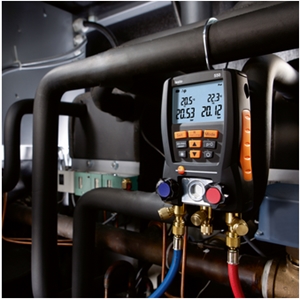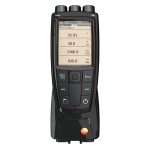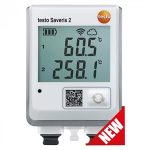Refrigeration and air conditioning units are complicated systems that require dedicated and accurate instruments to ensure they are performing correctly. While both digital and analogue gauges can get the job done, the former option has some distinct advantages that others cannot replicate.
1. Clear and concise
Analogue instruments rely on the interpretation of a needle moving along a scale to be read effectively, which can compromise accuracy, especially when it comes to reading smaller increments.
Digital devices, on the other hand, provide users with a direct result presented on a screen. These instruments can show figures to decimal places exactly, without having to rely on interpretation from the operator. This allows them to provide a level of accuracy that the analogue variety cannot match, allowing for a more detailed inspection of your equipment.
Testo’s gauges also offer backlit displays, allowing for accurate measurements even in dark conditions.
2. Real time management
Two of the most important parameters in air conditioning systems can be monitored in real time by Testo instruments. Superheating and subcooling are able to be calculated directly, eliminating the risk of calculation errors or the need to make estimates which could prove costly if they are incorrect.
Evaporation temperatures can also be observed in this manner, ensuring that any changes during measurement are noticed.
3. “Built-in” refrigerants
A lot of time and effort is needed to program analogue gauges to ensure they are prepared to provide accurate measures. Their digital counterparts, on the other hand, arrive ready to test for a number of different substances.
Digital instruments come with the parameters for a number of common refrigerants already loaded on to them. This prevents costly calibration errors which can lead to mistakes when performing maintenance on refrigeration and air conditioning units.









 Reduce cooking oil costs while ensuring quality
Reduce cooking oil costs while ensuring quality Expert knowledge on CO2 monitoring
Expert knowledge on CO2 monitoring Refrigeration knowledge - in 3 modules
Refrigeration knowledge - in 3 modules



